The History of Knights Templar Uniforms
To understand the deep significance of the Knights Templar uniform, it’s important to recognise the rich (and often mysterious) history of this legendary Masonic Order. From its ancient foundations to its modern rites, we’re here to shed light on its incredible legacy.
Where Did the Knights Templar Come from?
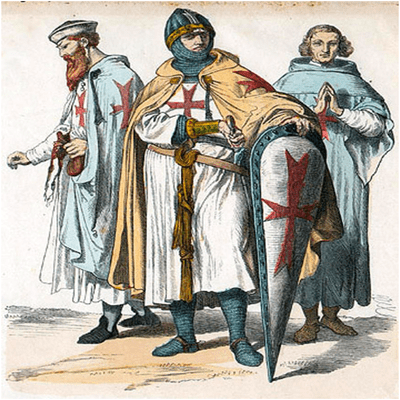
After the First Crusade, the medieval Knights Templar were organised (1118-1312AD) to both protect Christian pilgrims traveling through The Holy Land (ie. Jerusalem) and carry out military operations. Hugues de Payens and eight knights – all related by blood or marriage – were given residency on Temple Mount by King Baldwin.
By the time of their organisation, they developed The Latin Rule that was the basis of the Poor Fellow-Soldiers of Christ and the Temple of Solomon, later known as Knights Templar. Among the original 72 clauses were renouncing personal wealth and alcohol, banning curse words, maintaining absolute celibacy, leading a communal life, and fighting only when deemed absolutely necessary. As the organisation grew, so did a complicated list of rules.
The Templar’s Rise to Power
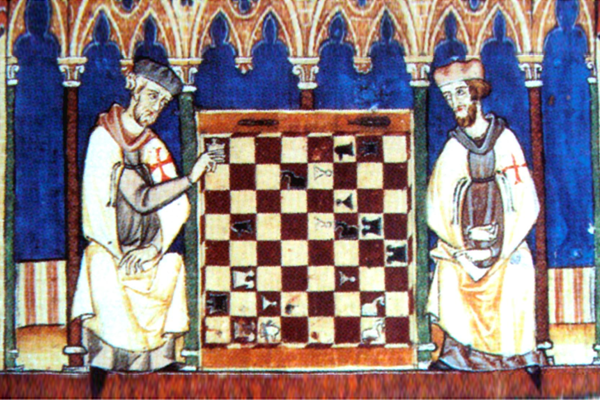
Within a decade, Pope Innocent II deemed Knights Templar exempt from taxes and reported only to him. This chivalric order quickly became popular among noblemen, either with sons joining ranks or pledging financial assistance. They created a well-organised banking system, owned a fleet of ships, and even held the entire island of Cyprus – all while defending the Jerusalem until the 2nd Crusades forced Christians out of the Holy Land.
The full name of the Order of Knights Templar Freemasonry is: The United Religious, Military and Masonic Orders of the Temple and of St John of Jerusalem, Palestine, Rhodes and Malta.
What Happened to the Knights Templar?
Though they were fearless and incredible in battle, the 2nd Crusades marked a shift in ownership of the Holy Land. As Muslims increased their military prowess, the last stronghold fell in the 12th century and the Knights Templar moved to France.
Meanwhile, King Philip IV had nearly bankrupted France and was looking for a method to regain wealth. The Order had gained incredible wealth and power across Europe but was protected by papal decree. Therefore, two Popes were murdered and Clement V was instated to back King Philip – and the papacy was shifted from Rome to Avignon (in France).
Knights Templar members were arrested for a range of offenses, from heresy, homosexuality, and even false idol worship. While the Pope himself tried to intervene, the King overruled him. More than 50 Knights Templar were burned at the stake in 1312 and Pope Clement V disbanded the Order in the same year.
As for the Order’s assets, some were given to Knights Hospitallers (a rival order) but it’s believed that most was divvied up between King Philip IV of France and King Edward of England.
The Knights Templar and King Bruce of Scotland
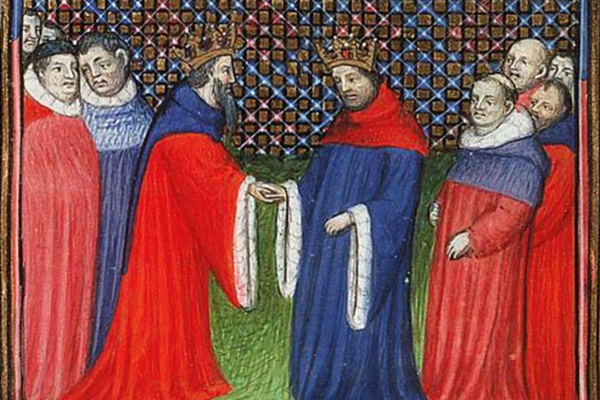
After the disbanding of Knights Templar, there are credible theories that King Bruce of Scotland offered sanctuary to remaining members. His advisors did go to France to search for an army that would help fight King Edward II of England. And Knights Templar members could really only seek sanctuary in Portugal or Scotland. We may never know the precise history but this certainly adds to this chivalric order’s legacy.
Knights Templar Today
There are whispers that Templars found safety within the ranks of Freemasonry, but they’re little more than rumors. While there is little overlap between the chivalric Knights Templar Order and modern Knights Templar Freemasons, the pursuit of ancient knowledge has remained a constant over the centuries: In the 1400s, the few remaining Templars were reportedly able to pass their knowledge of masonry and sacred geometry to bricklayers and stonemasons.
This “laid the foundations” for the entire brotherhood, and modern Knights Templar draw upon the Christian teachings of the ancient order.
What Is the Most Common Knights Templar Symbol?
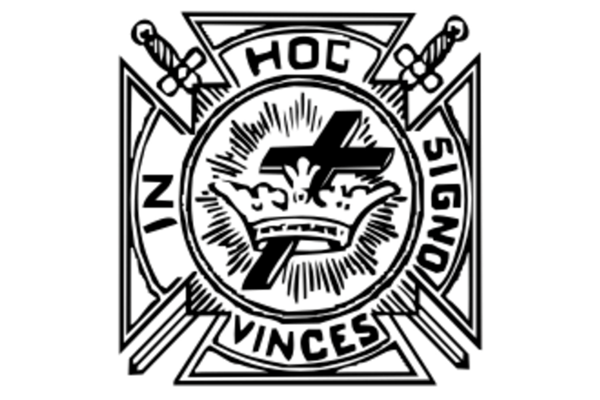
Also known as the Cross Formée Patée (or cross formy), the most common symbol in the Knights Templar is a red cross. Historically, it represents sacrifice and salvation in Christianity. You may also see the Cross Formée emblazoned with “In Hoc Signo Vinces” (“In this sign, thou shalt conquer”), as well as two crossed swords pointing diagonally in saltire.
How Do I Become a Knight Templar?
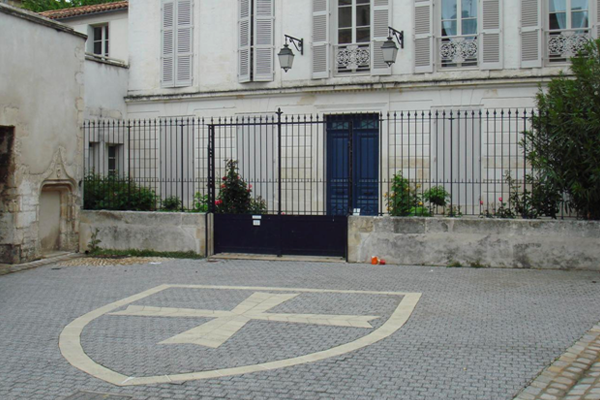
Every Freemason starts as a member of the Craft Order, also known as Blue Masonry. After passing through the three Craft degrees (ie. Entered Apprentice, Fellowcraft and Master Mason).
While there are a wide variety of paths that a brother can choose after completing the Craft Order, future Knights Templar must complete the three degrees of the Royal Arch Order (Mark Master, Most Excellent Master, and Royal Arch Mason).
Requirements to Become a Knight Templar
While many Masonic orders simply require their members to believe in a higher power, Knights Templar is a Christian organisation. To become a Knight Templar, one must:
- Be 18 and older
- A member’s child may be inducted as a “Squire” between the ages of 16 and 18.
- Profess to be a believer in Christianity
Have first passed through Craft and Royal Arch Orders
Modern Knights Templar Regalia
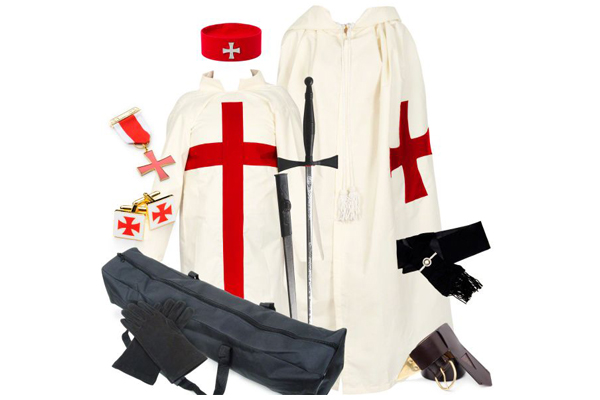
Knight Templar regalia draws on the historical wardrobe of the chivalric order. Just as the ancient members wore a white habit with a simple red cross, modern Knights Templar colors rarely deviate from red, white, and black.
Mantle

You’ve likely seen long, white robes embroidered with red crosses over the left heart. Introduced in the 1400s, these were solely used for ceremonies. Today, these mantles are an important part of ceremonies that impart a solemn aesthetic.
Tunic
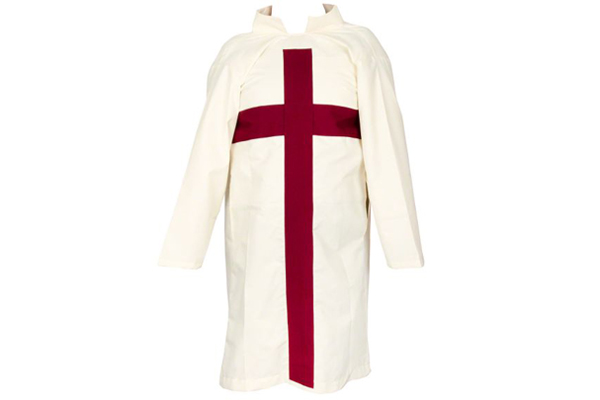
Also known as a surcoat, Knights Templar tunics are loose, white garments with a large red cross running down the length.
Dress Coat
For formal occasions, a black, military-inspired, doubled-breasted frock is expected to be worn under the tunic. Depending on the rank, various crosses, shoulder boards, and breast jewels will be worn. Dress coats are paired with trousers of the same cloth.
Sword and Batons

Traditionally, knights would carry a 38-inch broadsword. Freemasons tend to carry shorter, thinner blades (ie. rapiers) with ornate metalwork. You may also see members carrying less wieldy Knights Templar batons with insignia at the top.
Sword Frog & Belt
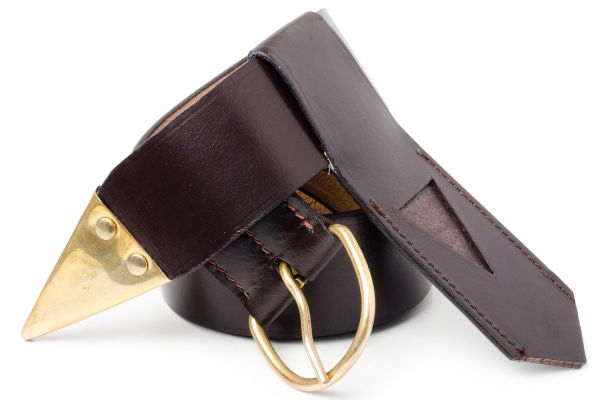
To keep hands free, a sword holder (called a “frog”) attaches to a belt worn over the tunic and under the mantle.
Gloves
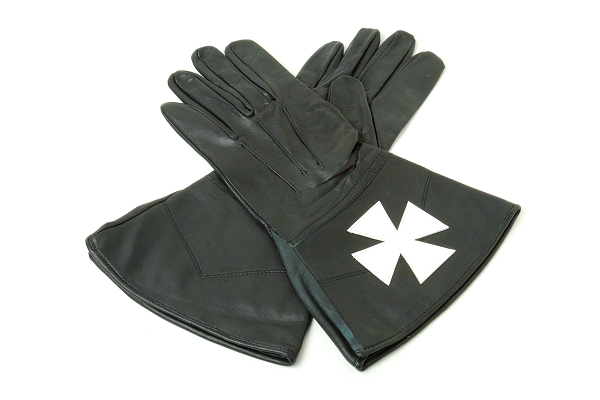
Black gauntlets (in both cotton and leather) are the most common choice for members of the Knights Templar Order.
Aprons
Unlike most Freemason Orders, the original Knights Templar uniform included a black, triangular apron. This was most typically embroidered with a skull and crossbones.
Hats
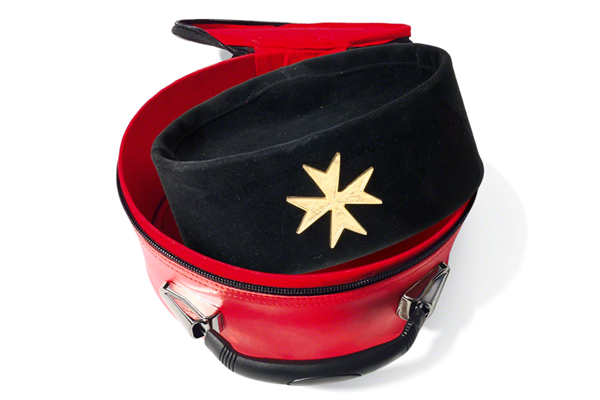
While some Knight Templar hats are ornately fashioned chapeaus (complete with ostrich plumes), it’s more common to wear a round crown cap.
The Finest Knights Templar Regalia Anywhere
As a leading manufacturer and purveyor of Masonic regalia, we ensure that only the finest pieces are shipped to our international clients. From breast jewels to cases, you can depend on Online Masonic Regalia to suit all of your Knights Templar needs.

